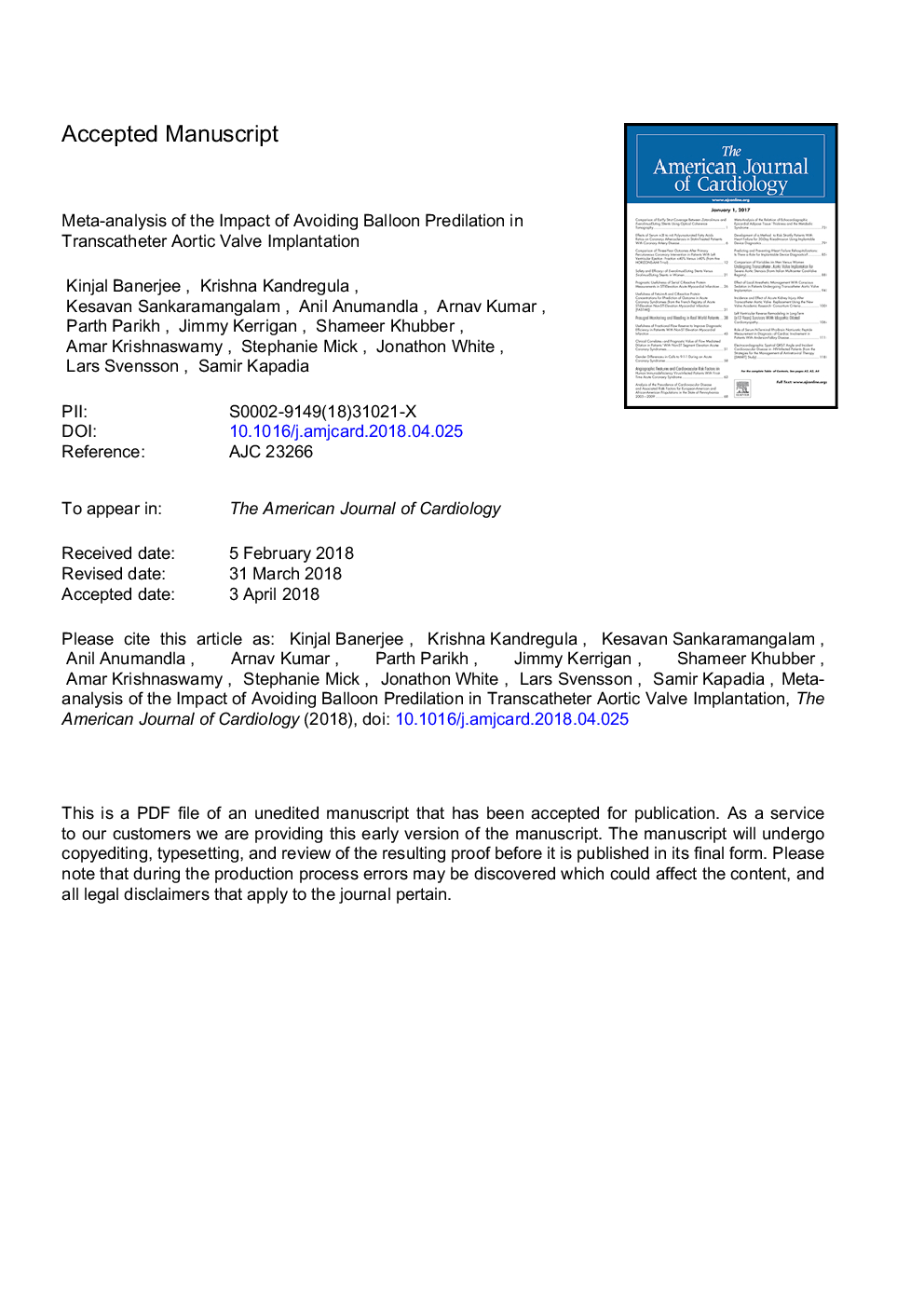| Article ID | Journal | Published Year | Pages | File Type |
|---|---|---|---|---|
| 8962776 | The American Journal of Cardiology | 2018 | 22 Pages |
Abstract
Balloon predilation (BPD) has been an integral part of transcatheter aortic valve implantation (TAVI) since inception. We sought to investigate the effect of avoiding BPD on outcomes of TAVI across different valve types. Articles were included if outcomes of TAVI without BPD were reported. Pooled meta-analysis used a random effects model and reported odds ratios (ORs). Twenty-one studies with 10,752 patients were pooled for analysis. Age and gender were well matched between NoBPD and BPD groups. There was no difference in mortality, stroke, bleeding, and acute kidney injury. NoBPD showed lower pacemaker rates (OR 0.84, 95% confidence interval [CI] 0.72 to 0.97), vascular complications (OR 0.77, 95% CI 0.62 to 0.95), and early safety at 30 days (OR 0.81, 95% CI 0.66 to 0.99). For balloon-expandable valves, lower rates of aortic regurgitation (OR 0.73, 95% CI 0.53 to 0.99) and early safety (OR 0.68, 95% CI 0.55 to 0.85) were seen. Self-expanding valves showed lower pacemaker (OR 0.80, 95% CI 0.66 to 0.97) and vascular complications (OR 0.70, 95% CI 0.50 to 0.99), with a trend toward higher postdilation (OR 1.51, 95% CI 0.85 to 2.67). TAVI without BPD is safe and effective. NoBPD is associated with fewer vascular complications, less aortic regurgitation, and fewer pacemaker requirements and composite early safety end points.
Related Topics
Health Sciences
Medicine and Dentistry
Cardiology and Cardiovascular Medicine
Authors
Kinjal MD, Krishna MD, Kesavan MD, Anil MD, Arnav MD, Parth MD, Jimmy MD, Shameer MD, Amar MD, Stephanie MD, Jonathon MD, Lars MD, Samir MD,
